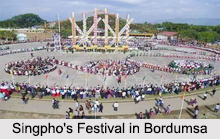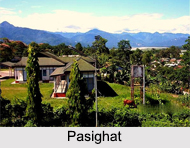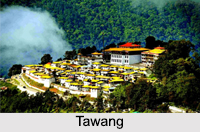 Cities of Arunachal Pradesh mesmerize and refresh the mind with cult of capturing the imagination along with the history of North east India. Some of the populous cities of Arunachal Pradesh are Tawang, Ziro, Basar, Deomali, Pasighat, Bomdila, Malinithan, Itanagar and many others are the places of cultural ethnic colourful festivals and fairs.
Cities of Arunachal Pradesh mesmerize and refresh the mind with cult of capturing the imagination along with the history of North east India. Some of the populous cities of Arunachal Pradesh are Tawang, Ziro, Basar, Deomali, Pasighat, Bomdila, Malinithan, Itanagar and many others are the places of cultural ethnic colourful festivals and fairs.
Bordumsa, Changlang district
Bordumsa is a town belonging to the Singpho tribe. One can visit this town for tribal culture.
Changlang, Changlang district
Changlang is an industrial city of north east, popular for crude oil, Indian coal and mineral resources. Tourism and hydro power are the secondary mode of economy generator.
Nampong, Changlang District
Nampong is located in the vicinity of Pangsau Pass, being the last town on the Indian side, at an elevation of 308 meters.
Anini, Dibang Valley District
Anini is a small underdeveloped town, mainly because of its remoteness. One can visit this place for its cool and serene ambience.
Seppa, East Kameng District
Seppa is a beautiful city and hill station located near Kameng River and there is a helipad there. It is located 160 kilometres from Itanagar and 213 kilometres from Tezpur from Assam. It is connected by motorable road.
Pasighat, East Siang District
Pasighat is the oldest town with historical and archaeological ruins with the best accommodations, as it is also serving as a hill station.
Palin, Kra Daadi District
Palin is a small hilly town inhabited by Nyishi tribe of Arunachal Pradesh.
Tezu, Lohit District
 Tezu is the best place for tribal settlement in Arunachal Pradesh. It is popular in the tourism map for the North east India Tribal Culture.
Tezu is the best place for tribal settlement in Arunachal Pradesh. It is popular in the tourism map for the North east India Tribal Culture.
Ziro, Lower Subansiri district
Ziro is the centre of economic activities and this place is best known for tourism for the presence of green mountains and the passes.
Banderdewa, Papum Pare District
Banderdewa is the commercial capital of Arunachal Pradesh. The nearest railway station is Harmutty railway station.
Itanagar, Papum Pare District
Itanagar- the capital city is situated at the foothills of Himalayan Mountain Range.
Naharlagun, Papum Pare District
Naharlagun allures one for the beautiful landscape beauty of the mountain ranges. It is 10 km from Itanagar. For the presence of long monsoon rains, this city is popular after Cherapunji in Meghalaya.
Nirjuli, Papum Pare district
Nirjuli offers one with the exquisite beauty of nature, hills, lakes and the small rivers.
Yupia, Paum Pare District
Yupia is located about 20 km from Itanagar and it is popular for the Buddhist monasteries and Ganga Lake.
Tawang, West Kameng District
Tawang is well known for the solitude and Buddhist monasteries. This is also known as the hill station.



















